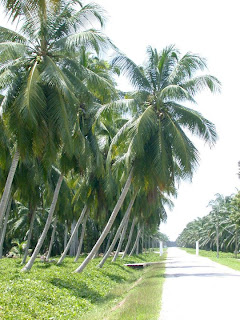Following the Heart
Following
the Heart
“Your time is limited. So don't waste it living someone else's life. Don't be trapped by dogma - which is living with the results of other people's thinking. Most importantly, have the courage to follow your heart and intuition.”

My pessimism was not brought about because of the job I was leaving, far from it. It was because I felt the city life would finally get the better of me, with all the excitement, convenience, and allure of citing living made available. For a while, it did seem as though working in the city was more attractive, more rewarding even. I loved the fast-paced lifestyle, the great exposure to different cultures, the ease of communication and getting things done. I loved how I could just run down from my desk and grab a wholesome meal within my office block, and then get over to the gym at the building just next door for a quick workout (not that I found time to exercise anyway).
You see, working in the city lacks one key
aspect for me: Charm.
.JPG) Don’t be fooled, though. As romantic as it
may be to read about plantation living from books like Mahbob Abdullah’s “Planter’sTale” or Leslie Davidson's "East of Kinabalu", working in the
plantation is no walk in the park. Every person has to find his/her way of
dealing with the stress of working in a plantation, and it is definitely not a
job suited for just anyone. Some take on sports and physical activities, others take
on less desirable pastimes. Everyone works hard, and at the end of the day,
everyone plays hard.
Don’t be fooled, though. As romantic as it
may be to read about plantation living from books like Mahbob Abdullah’s “Planter’sTale” or Leslie Davidson's "East of Kinabalu", working in the
plantation is no walk in the park. Every person has to find his/her way of
dealing with the stress of working in a plantation, and it is definitely not a
job suited for just anyone. Some take on sports and physical activities, others take
on less desirable pastimes. Everyone works hard, and at the end of the day,
everyone plays hard.
For me, the most memorable aspect I’ve retained of my
time in the plantation is the scenery.

Showy purple legume flowers

A beautiful flourish of fungal blooms on an abandoned
old coconut
Coconut grove at entrance to the estate I worked
Coconut flower in bloom
Wasps busy pollinating coconut flowers
Triple-branching coconut palm
Sheep in the tropics? Better believe it
Young oil palm seedlings
Oil palm seedling glistening in the sun
A neat and well planted field of oil palms
Migratory bird over a cacao plantation
Shade trees commonly used in a cacao plantation
Cacao flowers in bloom
Young cacao leaf in flush
A big, red cacao pod
Mangrove tree at the riverside dock
The river that flows adjacent to the
plantation property
Ultimately, experience has taught me that
regardless of where one chooses to work, the most important thing is that you
enjoy what you are doing. My first job was in the plantations, and honestly, I
had no idea what kind of work it entailed back then. I admit the culture shock
was quite great for me, and I didn’t adapt as well as expected. Now that I’m
older, and presumably wiser, I am hoping to encounter the plantation life once
more, but this time as someone different:
A true apprentice to that art called agri-culture.
















hi
ReplyDeletewanted to ask something about some photos you have on your blog.
you could get in touch with me at fedaplus22@gmail.com.
hope to hear from you soon.
thanks.
Hi Michael J,
ReplyDeleteIt can be seen that you have a high interest in coconut plantations, I would like to enquire more about these plantations and hopefully work with you on our future coconut plantations.
Please get back to me at jolene@texline.com.sg
Best Regards,
Jolene Er
Hi Michael J,
ReplyDeleteI am much interested in your coconut column, could you share your experience and potential of it.
Would like to hear from you.
Best regards,
Lay Peng
email: ylaypeng@gmail.com
Hi Michael J,
ReplyDeleteI am looking for few information about Matag.
How many years the Matag coconut tree can produce ? The life span of the tree?
Thank you ,
Musbau G. Agunbiade
gbadebo.agunbiade@gmail.com
This comment has been removed by the author.
ReplyDelete